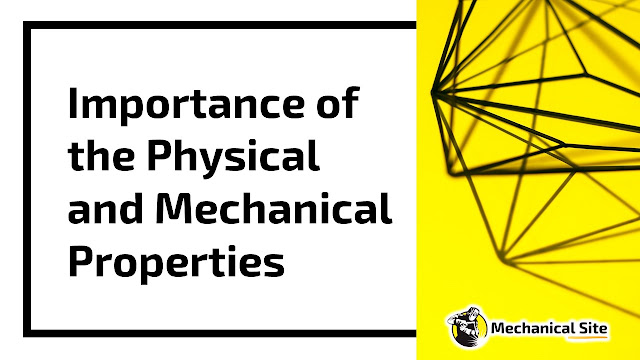Powder Metallurgy: Definition, Process, Applications, Advantages, & Disadvantages

In this article, we will know the details of powder metallurgy like definition, process, applications, advantages, and applications.
What is Powder Metallurgy?
Powder metallurgy is a manufacturing process that involves the production of metal components by compacting powdered metal in a die and then sintering the compacted material.This process is widely used in the manufacturing industry due to its ability to produce complex geometries and achieve high levels of precision.
Powder Metallurgy Process:
The powder metallurgy process involves several steps:
1. Powder production:
Metal powders are produced through atomization or reduction processes. Atomization involves melting the metal and spraying it with a gas to form droplets, which are then solidified into powder. Reduction involves reducing metal oxides to the metal form through a chemical process.
2. Powder blending:
The metal powders are blended with lubricants and other additives to achieve the desired properties. Lubricants are added to improve the flow of the powder during compaction, while other additives can improve properties like strength, hardness, and wear resistance.3. Compaction:
The blended powders are compacted in a die to achieve the desired shape. The powder is placed in a die and compressed under high pressure to form a green compact. The compacting pressure can range from a few tons to hundreds of tons depending on the size and shape of the part.
4. Sintering:
The compacted material is heated in a furnace to a temperature below the melting point of the metal, causing the particles to bond together. This process is called sintering and it typically takes place in a controlled atmosphere to prevent oxidation of the metal. The sintering temperature and time are carefully controlled to achieve the desired density and strength of the final product.
5. Secondary operations:
The sintered material may undergo secondary operations, such as heat treatment, machining, or surface finishing. Heat treatment can improve the properties of the material by altering its microstructure. Machining can be used to remove any excess material and achieve the desired dimensions and tolerances. Surface finishing can be used to improve the appearance or corrosion resistance of the final product.Powder Names with Thermal and Mechanical Properties:
| Powder | Thermal Properties | Mechanical Properties |
|---|---|---|
| Iron | High thermal conductivity and coefficient of expansion. | High strength, hardness, and wear resistance. |
| Copper | High thermal conductivity and low coefficient of thermal expansion. | High strength, good electrical conductivity, and corrosion resistance. |
| Aluminum | Low thermal conductivity and high coefficient of thermal expansion. | High strength, low density, and good corrosion resistance. |
| Nickel | High thermal conductivity and low coefficient of thermal expansion. | High strength, corrosion resistance, and good ductility. |
| Titanium | Low thermal conductivity and high coefficient of thermal expansion. | High strength-to-weight ratio, good corrosion resistance, and biocompatibility. |
| Tungsten | Low thermal expansion and high thermal conductivity. | High strength, hardness, and wear resistance. |
| Stainless Steel | High thermal conductivity and coefficient of thermal expansion. | High strength, hardness, and corrosion resistance. |
| Cobalt | High thermal conductivity and low coefficient of thermal expansion. | High strength, hardness, and corrosion resistance. |
| Bronze | High thermal conductivity and low coefficient of thermal expansion. | High strength, good wear resistance, and corrosion resistance. |
| Molybdenum | Low thermal expansion and high thermal conductivity. | High strength, hardness, and toughness. |
Powder Metallurgy(PM) Applications:
- Automotive Industry: PM is widely used in the production of lightweight, durable and wear-resistant parts such as gears, bearings, and engine components for high-performance engines.
- Aerospace Industry: PM is used to manufacture high-strength, lightweight components such as turbine blades, vanes, and structural components that can withstand high temperatures and pressures, making them suitable for critical applications in aircraft engines and other aerospace systems.
- Medical Industry: PM is used in the medical industry to produce biocompatible, corrosion-resistant, and sterilizable surgical instruments, dental implants, and other medical devices.
- Electrical Industry: PM is used to produce magnetic cores, contact materials, and electrical contacts that have high magnetic permeability, low electrical resistance, and excellent wear resistance, making them ideal for use in electrical applications.
- Industrial Applications: PM is used in various industrial applications to produce cost-effective, wear-resistant parts, cutting tools, and filters that can be produced in large quantities.
Powder Metallurgy Advantages and Disadvantages:
| Advantages | Disadvantages |
|---|---|
| 1. Ability to produce complex shapes | 1. Initial equipment and tooling costs can be high |
| 2. Cost-effective for mass production | 2. Limited to certain materials and alloys |
| 3. High material utilization | 3. Limited to certain shapes and sizes |
| 4. Good surface finish and accuracy | 4. Requires skilled operators for production |
| 5. High production rate | 5. Parts may have lower mechanical properties |
| 6. Uniformity of properties | 6. Surface porosity can be an issue |
| 7. Good mechanical properties | 7. Secondary operations may be necessary |
| 8. Wide range of materials and alloys | 8. Can be sensitive to impurities and defects |
| 9. Can produce high-strength materials | 9. Sintering process can cause dimensional changes |
| 10. Suitable for small and large parts | 10. Limited to certain applications |
| 11. Low scrap rate | 11. Material cost can be higher than alternatives |
| 12. Can produce near-net shape parts | 12. Process may be affected by humidity and air |
| 13. Minimal material waste | 13. Limited to certain production volumes |
| 14. Can incorporate additives and alloys | 14. Sintering can cause distortion of parts |
| 15. Good corrosion resistance | 15. Tolerances may be difficult to maintain |
| 16. Can produce high-density materials | 16. Surface oxidation can be an issue |
| 17. Low porosity | 17. Part geometries can be limited |
| 18. Good wear resistance | 18. May require post-sintering treatments |
| 19. Environmentally friendly | 19. Can be difficult to recycle or reuse |
| 20. Can reduce the need for machining | 20. Material properties may vary across a part |
FAQs about Powder Metallurgy:
What are powder metallurgy and its types?
Powder metallurgy is a process that creates metal parts from powder. There are three types: hot isostatic pressing, metal injection molding, and powder forging.
Why is powder metallurgy used?
Powder metallurgy is used for its ability to produce complex shapes with superior properties at lower costs.
What are the four steps of powder metallurgy?
The four steps of powder metallurgy are powder production, mixing, compacting, and sintering.
Which machine is used in powder metallurgy?
Different machines are used in powder metallurgy, such as hydraulic presses, mechanical presses, and isostatic presses.
What is the casting of powder metallurgy?
Casting in powder metallurgy refers to the process of pouring molten metal into a mold and allowing it to cool and solidify to form a shape.
What are the raw materials of powder metallurgy?
The raw materials used in powder metallurgy can be any metal or alloy that can be reduced to a fine powder.
What is the annealing of powder metallurgy?
Annealing in powder metallurgy refers to the process of heating a sintered part to a high temperature and then cooling it down slowly to improve its properties.
What is the particle size of powder metallurgy?
Particle size in powder metallurgy is important because it affects the properties of the final part.
What is the temperature of powder metallurgy?
The temperature used in powder metallurgy varies depending on the type of material and the desired properties of the final part.
What is the density of powder metallurgy?
The density of powder metallurgy parts depends on various factors, such as the type of powder used, the compacting pressure, and the sintering conditions.





